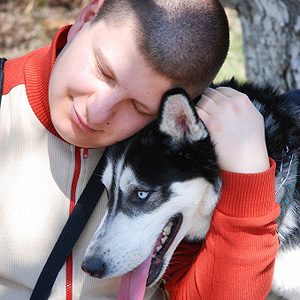By the time their three-year-old cairn terrier, Ralphie, passed away, his owners were completely heartbroken. After endless trips to the vet, a diagnosis of severe allergies followed by ultimately unsuccessful medical procedures, they watched their faithful dog struggle. They finally had no choice but to euthanize.
“We gave him a small private family funeral and then cremated him. You just don’t get over that kind of loss, but it helped,” said Jullian Brace, who is also a funeral director atDeceased Pet Care Funeral Home and Crematory in Atlanta, Georgia.
“It is important to take the time to grieve for pets,” Brace said. “Most of our clients see their ‘pets’ as family members. They often refer to their pets as their child or baby. Our business feels exactly the same way. As animal lovers ourselves, we seek to offer that compassion and understanding to our clients.”
(Photo by Thinkstock)

1. Support Is Important
Many pet funeral homes now offer support groups and grief counselling to ease the pain for pet owners who might not know how to cope with their feelings of loss. Psychologists increasingly acknowledge the deep emotional bonds people form with pets. Older people who lose a pet and may have been living alone can be especially affected by the loss of their companion. In fact, during the pet grieving process, people can feel the same five different stages of mourning experienced in any loss: denial, anger, bargaining, depression (often the longest stage) and ultimately, acceptance.

2. Reach Out
There has been a considerable shift towards grieving pet owners in North America. Brenda Drown, executive secretary of The International Association of Pet Cemeteries and Crematories (IAPC), a not-for-profit organization dedicated to the advancement of pet cemeteries everywhere through public-awareness programs, remembers that people used to snicker when they heard their name. No longer.
“Now, pets are a major parts of people’s lives, a member of the family…We’ve seen many changes during our 31 years of operation,” Drown said.
The IAPC estimates that there are more than 600 active pet cemeteries in the United States. Also, many human funeral homes are adding services for animals.
(Photo by Thinkstock)

Say Goodbye
Pet burial ceremonies come in all shapes and sizes and are tailored to the unique needs of each family, but some common themes stand out. The most popular choice for families is a memorial stone, followed by the choice of an urn for the animals’ ashes. Some pet owners organize live music or might even bring other live animals into the ceremony.
Even the most basic of rituals and ceremonies (making a scrap book of favourite pet pictures) are especially helpful in helping children grieve the loss of a pet. In the more formal ceremonies, the family is given the chance to view their pet, once they are groomed and prepped according to the clients’ requests. They are often positioned as though they were sleeping before the final burial or cremation. The ceremony usually includes a reading, such a poem or bible passage.
“Many clients want to go to the graveside and say a few words,” Brace said. “They want to get used to the idea that their pet has gone back to the Earth. It helps them with the finality of things. When you send your pet off with that kind of viewing or ceremony, you feel satisfied that you’ve given that animal the respect it deserves. Pets love their families so unconditionally, so that many owners feel it is the least they can do.”
Whether or not you choose an elaborate ceremony, there are countless ways you can cherish the memories of a beloved pet, including putting together a special photo album or simply telling stories about the animal with family and friends. By acknowledging your loss and honouring the deceased, you’ll also be engaged in an important part of the healing process.